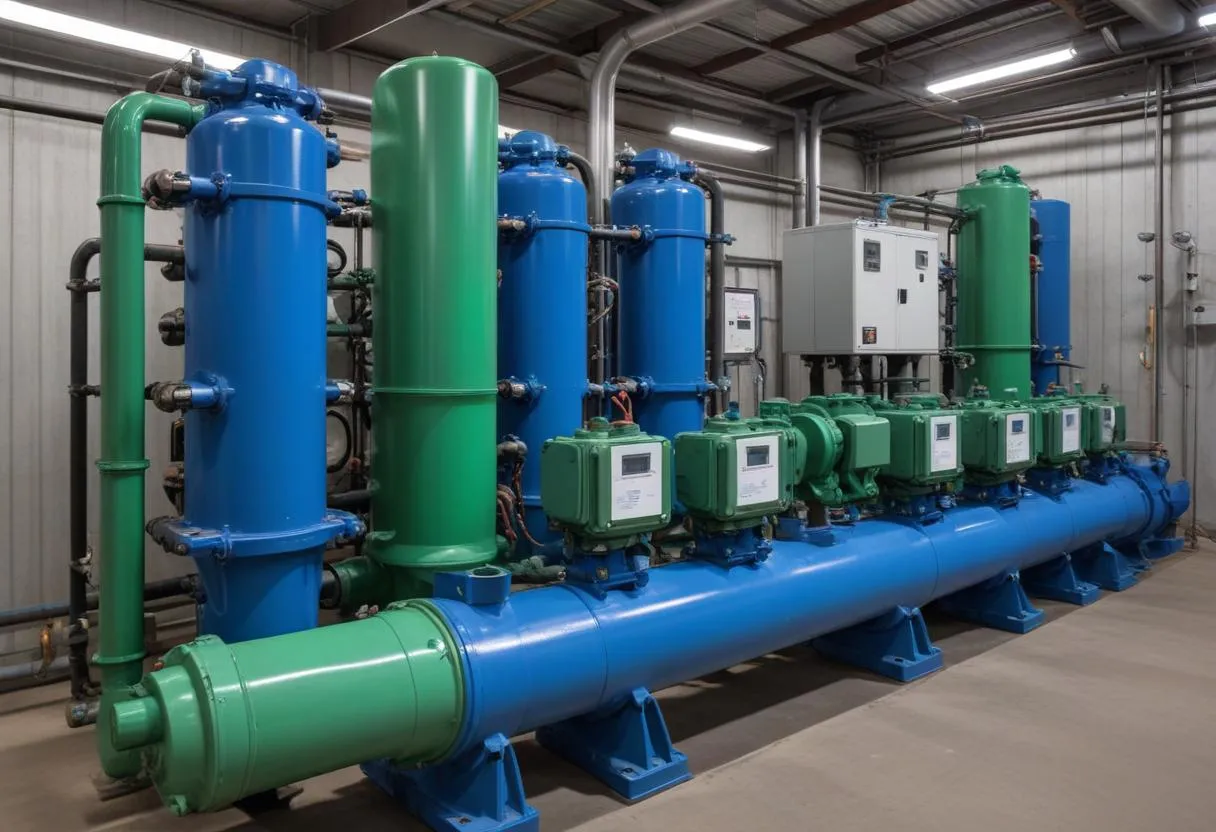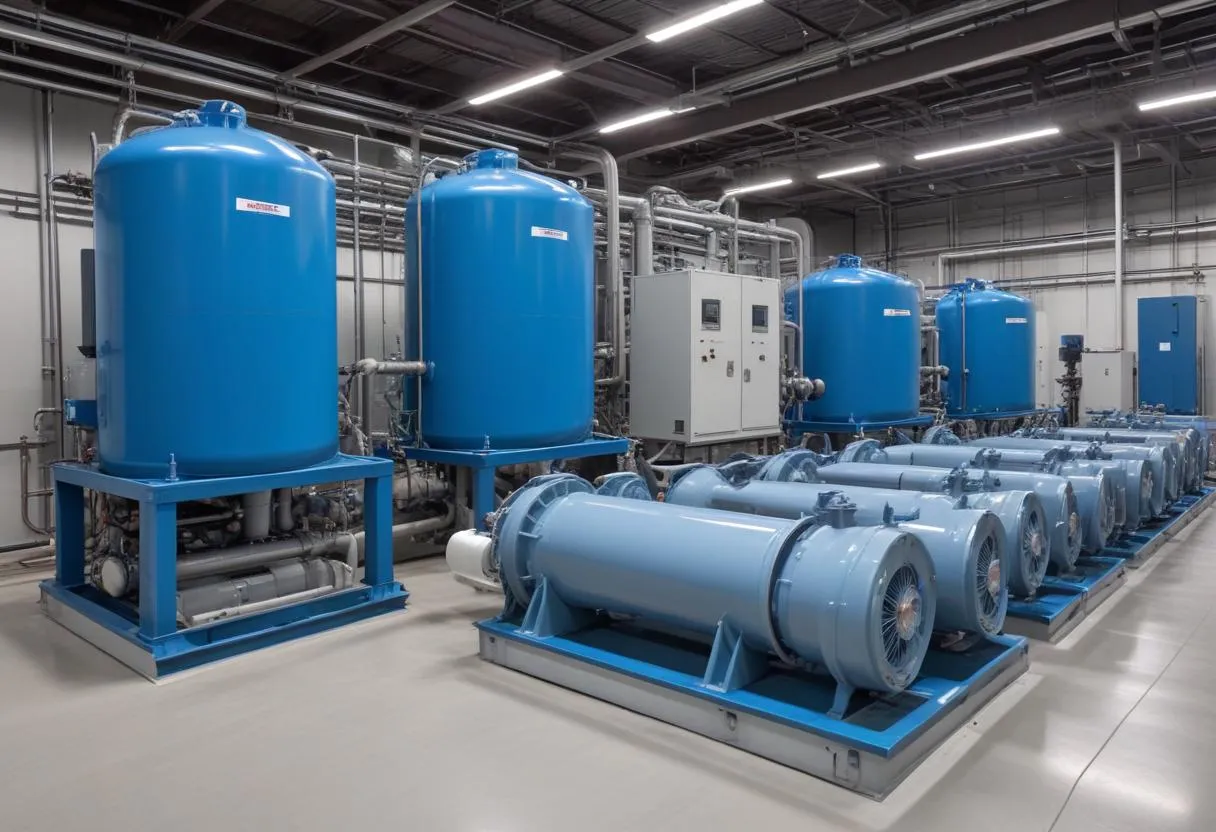 The journey toward energy-efficient pumps has been marked by several pivotal advancements, particularly in the realms of hydraulic design, motor technology, and smart control systems. Originally, pump designs were primarily focused on achieving desired output without much consideration for the energy consumed in the process. Over time, the rise in energy costs and increased environmental concerns have spurred significant changes.
The journey toward energy-efficient pumps has been marked by several pivotal advancements, particularly in the realms of hydraulic design, motor technology, and smart control systems. Originally, pump designs were primarily focused on achieving desired output without much consideration for the energy consumed in the process. Over time, the rise in energy costs and increased environmental concerns have spurred significant changes.
Hydraulic design improvements have been fundamental in increasing pump efficiency. Traditionally, pumps operated at a fixed best efficiency point (BEP). However, modern hydraulic designs feature variable speed drives (VSDs) that adjust the flow rate to meet demand without wasting energy. This adjustment capability has dramatically improved energy consumption profiles in various pumping applications.
Another transformative development has been in motor technology. The transition from conventional induction motors to permanent magnet synchronous motors (PMSMs) marks a significant evolution in pump drive systems. PMSMs offer higher efficiency levels over a broader range of operating conditions and reduced thermal and electrical losses compared to their predecessors.
| Motor Type | Efficiency | Preferred Application |
|---|---|---|
| Induction Motor | Less efficient at part-load | General Purpose |
| Permanent Magnet Synchronous Motor | Highly efficient across all loads | Energy Critical Applications |
Integration of smart control systems has also been crucial. These systems leverage sensors and digital controls to dynamically optimize pump operations for various parameters such as pressure, flow rate, and power consumption. Smart controls not only enhance efficiency but also contribute to prolonged lifespan and reduced maintenance needs of the pump systems by preventing conditions like cavitation and flow surges.
- Pressure sensors – control and maintain optimal pressure to reduce power use.
- Flow meters – adjust speeds to match the required flow, avoiding unnecessary energy expenditure.
- Power monitors – track and optimize energy usage in real time.
These technological evolutions signify a step away from the traditional ‘one-size-fits-all’ approach to a more tailored, application-specific strategy in pump design. This shift is not only ecologically responsible but also economically advantageous due to the significant reductions in energy expenditures and operational costs they bring about. As we advance, the importance of integrating these innovative solutions across various industries becomes increasingly clear, ensuring that the pumps are not only functional but also contributory to sustainable energy goals.
Innovative materials and components in pump design
The quest for more energy-efficient pump designs has prompted engineers and manufacturers to explore and integrate a range of innovative materials and components. These advancements are critical in improving the overall performance, longevity, and efficiency of pumps in various industrial applications.
One notable material that has become increasingly prominent in pump construction is advanced composite materials. These materials are favored for their exceptional strength-to-weight ratio, corrosion resistance, and reduced energy consumption during pump operation. For instance, the use of carbon fiber-reinforced polymers (CFRP) in impellers and diffusers allows for a lighter construction, which directly translates to lower energy requirements for pump rotation and reduced wear on other mechanical components like bearings and seals.
Here is a comparison of commonly used materials in pump construction:
| Material | Benefits | Common Uses |
|---|---|---|
| Stainless Steel | Durable, Corrosion Resistant | Casings, Impellers |
| Carbon Fiber-Reinforced Polymer (CFRP) | Lightweight, High Strength | Impellers, Diffusers |
| Bronze | Good Corrosion Resistance, Less Expensive than Stainless Steel | Impellers in Marine Applications |
In addition to materials, there have been significant innovations in component design, such as the development of non-metallic bearing systems and seal-less pump technologies. These components offer substantial reductions in friction losses and eliminate issues associated with traditional sealing methods, such as leakages and maintenance downtime. Seal-less magnetic drive pumps, for example, use a magnetic field to transmit torque to the impeller, completely negating the need for a shaft seal.
- Magnetic drive pumps – Eliminate shaft seals, reducing leakage and maintenance.
- Ceramic bearings – Provide excellent wear resistance and reduce energy losses from friction.
- Non-metallic bearings – Used in corrosive environments, increasing pump life and efficiency.
The introduction of these kinds of specialized components aligns with the broader industry push towards more environmentally friendly and sustainable practices. Manufacturers are aiming not only to meet current efficiency standards but to set new benchmarks for what is technologically feasible in pump performance and energy conservation.
These innovative materials and high-performance components are essential for the ongoing development of the next generation of energy-efficient pumps. They are significant not only in enhancing operational efficiency but also in expanding the potential applications of pumps in more challenging environments, asserting a pivotal role in shaping the future landscape of pump technology.
Case studies and applications of energy-efficient pumps
 The real-world applications and implications of energy-efficient pump technologies can be seen in a variety of case studies across different industries. These examples not only demonstrate the practicality of these advancements but also highlight their significant contributions to energy savings and operational efficiency.
The real-world applications and implications of energy-efficient pump technologies can be seen in a variety of case studies across different industries. These examples not only demonstrate the practicality of these advancements but also highlight their significant contributions to energy savings and operational efficiency.
A striking example can be found in the municipal water supply sector, where the installation of variable speed drives (VSDs) combined with advanced hydraulic designs has resulted in significant reductions in energy consumption. In one such case, a large water treatment facility replaced its old, fixed-speed pumps with new, energy-efficient models equipped with VSDs. This upgrade led to a 30% reduction in energy usage, translating into substantial cost savings and a shorter return on investment period due to lower operational costs.
| Facility Type | Old Technology | New Technology | Energy Savings |
|---|---|---|---|
| Water Treatment | Fixed-Speed Pumps | Variable Speed Drives | 30% |
In the industrial sector, a petrochemical plant showcases another application of energy-efficient pumps. The plant integrated pumps with high-efficiency motor systems and smart control technologies, designed to optimize flow rates and minimize energy waste. This integration has not only enhanced the operational efficiency but also has reduced greenhouse gas emissions, helping the plant to meet stricter environmental regulations.
- Integration of smart controls to adjust operations based on real-time demand.
- Use of high-efficiency motors that maintain optimal performance across various loads.
Another compelling case comes from the agricultural sector, where irrigation systems often represent a significant part of operational costs. A farm switched from traditional centrifugal pumps to those equipped with energy-efficient technologies, including advanced material impellers that reduce wear and improve longevity. The result was a 25% drop in energy usage and enhanced reliability of the irrigation system, leading to improved crop yields and reduced water consumption.
- Replacement of conventional impellers with advanced material options.
- Reduction in energy consumption by 25%, leading to lower operational costs.
These practical applications reflect just a small sampling of the vast potential that energy-efficient pump technologies hold across various fields. The shift toward more sustainable and cost-effective systems is rapidly becoming a priority for businesses looking to reduce both their environmental footprint and operating expenses. As demonstrated by these case studies, the integration of modern pump technologies not only supports ecological goals but also drives economic benefits, making it a compelling choice for future investments.